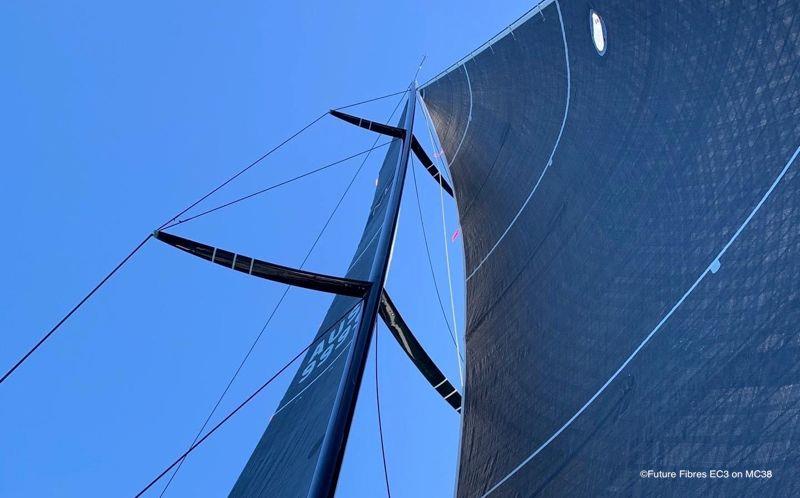
Composite Rigging - what are the benefits?
by Phil Anniss 23 Oct 2020 05:00 NZDT

Composite rigging benefits © Future Fibres
Upffront.com is constantly striving for lighter, faster and safer sailing for all boat owners, regardless of sailing style. Composite (or synthetic) rigging is one of the biggest and most cost-effective performance improvements that you can make. In this article we look at the benefits of switching from wire or rod to composite standing rigging.
Weight
The exact numbers will vary depending on fibre and system choices but, as a general rule, a retrofit from wire / rod rigging to composite will create an approx. 75% weight saving. For example, the rod weight alone (excl. fittings) on an X362 would be approx. 23kg (V's/D's, forestay and backstay) whereas the equivalent PBO cable weight (also excl. fittings) would be approx. 6kg. That is a 17kg saving.
On average, every kilogram saved from your mast and rigging package, equates to adding 4kg to the keel, which has extensive benefits to your sailing performance.
Benefits of reducing weight aloft:
- Increased righting moment / stability means you sail faster
- Lower Centre of Gravity = better handling and responsiveness
- Faster acceleration out of tacks
- Less pitching moment = faster upwind in a choppy sea
- Lower heel angle and reduced rolling at anchor = greater comfort
- Reduced fuel consumption under motor!
Strength
Composite standing rigging is specified on a "stretch equivalent" basis. That means that if you are replacing a Nitronic rod rigging element, the composite cable will be designed to be the same stiffness / stretch as your existing rod. This is done to ensure that your mast is properly supported and performs as it was originally designed.
A beneficial by-product is that, depending on the fibre, the overall break strength of the composite cable will be 50-60% stronger than the rod equivalent. As the working loads are the same, it means that you have a much higher factor of safety with composite rigging.
Composite rigging is therefore significantly lighter and inherently safer than rod / wire standing rigging - so what's the catch!?
Cost
The obvious downside of changing to composite rigging is that it does cost more than rod / wire. In a recent example on a cruiser/racing 40-footer, the composite rigging retrofit project (including cables, new metalwork and necessary spreader modifications) was between 2x and 3x the replacement rod cost (depending on composite manufacturer quote). So, this performance upgrade is not in everyone's budget, but if you are looking to breath a new lease of life into a beloved boat, switching to composite rigging has been shown to be THE most cost-effective performance improvement.
The fibre rigging mindset
There is a general perception that you can put a set of wire shrouds on your boat and forget about them. Whilst this is misguided, with proper care and maintenance metal shrouds are generally very resilient. You would probably be more worried about your spinnaker pole in a collision against the forestay, and a sail / batten pocket will come off worse if the main is pressed against the shrouds for long periods downwind!
Regardless of core material you cannot dispute the fact that a hard edge (metal or even sailcloth) can chafe through both cover and core of a carbon / fibre cable. Therefore, you do need to avoid full battens resting against the shrouds and you should not let sheets/halyards run across your composite Verticals. However, one of the primary roles of braided covers on composite rigging is to act as an early warning that chafe is a potential issue. On some offshore race boats, they have two braided covers - the outer one black, with an inner white cover - to aid visual inspection and deal with potential problems early.
So, with a proactive approach to managing your rigging, and with regular inspection, all the potential threats can be avoided and composite rigging can ultimately last as long, if not longer than rod/wire.
Conclusion
A retrofit to composite rigging is one of the biggest single performance improvements you can make to your sailing boat. It takes a different mindset and some upfront investment, but the effects can be transformational on an old boat. This is not just for racing orientated sailors. Reducing weight aloft can simply make coastal cruising more enjoyable and safer:
Light + Safe = Fast + Fun!
If you would like to explore the options for a retrofit to composite rigging please use the Composite Rigging Enquiry Form or contact us at